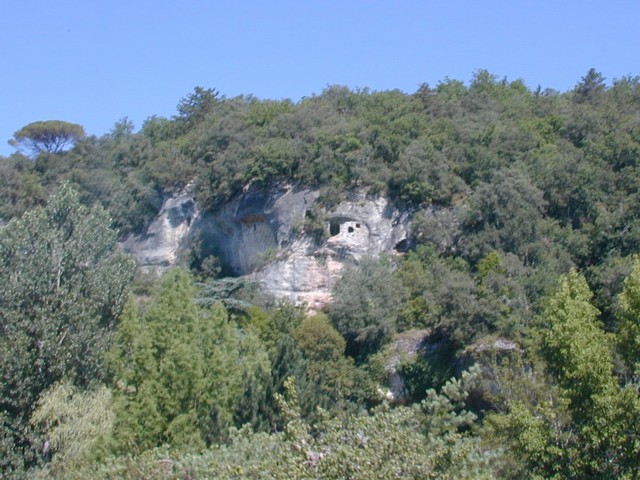

This morning we took a day trip to Rouffignac, not too far from Sarlat. There's lots of limestone in this area, and a lot of caves. Some of them were inhabited, and some of them are! These "troglodyte" houses have become fashionable as country homes for people who live in Paris. No kidding! Of course, they get remodeled pretty extensively on the inside.
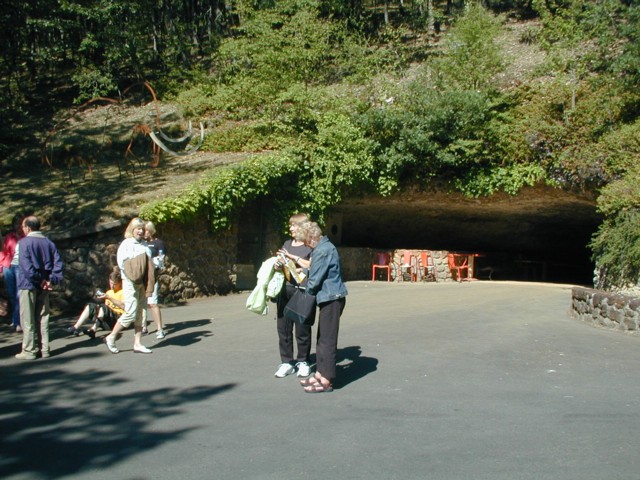
Our destination was another cave, not up a cliff but into a hillside. It doesn't look very impressive from the entrance, but the complex inside has three levels and about 10 km of passages, with a fine collection of prehistoric drawings from 13000 years ago. This modest opening is the only entrance.
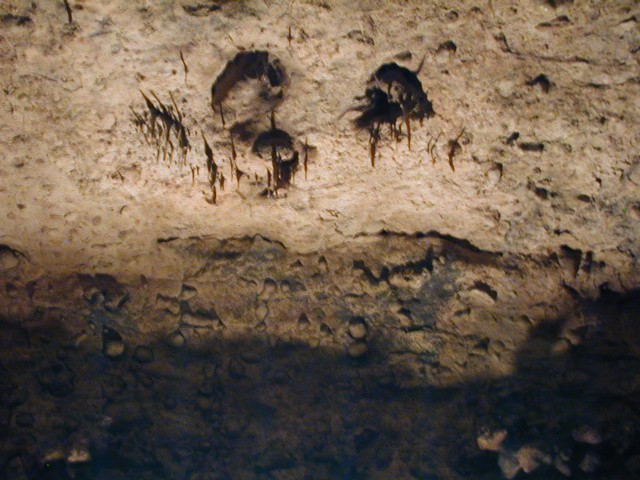
The cave was created by the chemical and mechanical action of an underground river, which receded two or three million years ago and left the cave complex dry. Actually, it's not completely dry; the relative humidity is about 95%, and there's significant condensation on the walls. However, a layer of clay silt has pretty much sealed the limestone, and there's not a lot of infiltrating water, so the caves don't have much alteration by stalactites or stalagmites. We saw a few little fingers an inch or so long hanging from the ceiling in a couple of places; the rounded protrusions are flint nodules, typically a few inches across, where harder flint resisted the erosive force of the water as it carved the limestone.
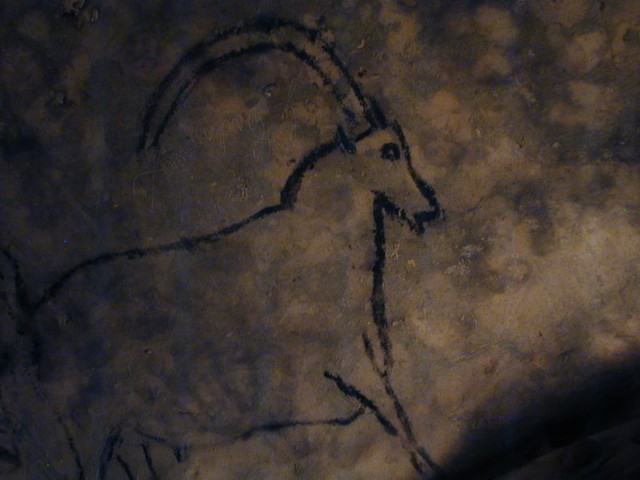
We split into three groups to ride an electric railway about half a mile into the top level of the cave complex. The roof was dozens of feet above our heads in some places, but toward the end before we turned around the height narrowed to just a couple of feet. A trench had been dug in the floor for the rails, and we got out and stood there to look at the "paintings" on the ceiling. Actually, there were no paintings in the cave (pigment daubed on with a brush or applicator); rather, there were several images and even murals scribed into the walls where they were softer, and here were drawings made with rocks that contained manganese dioxide, as with a pencil. The artist must have laid on his back in the original tight quarters; there were some animals that were so large he couldn't have seen them all at once as he was drawing them. In order to protect the art you can't use a flash, and the walls are so soft in places that you can't touch them; however, I was able to brace my camera against the wall of the trench, suppress the flash, and take this time exposure of a drawing of an ibex.
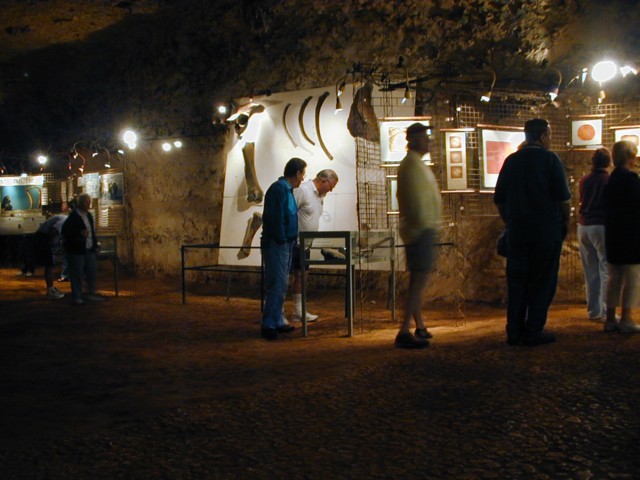
The caves weren't always so well protected. The prehistoric drawings here show up in records at least as far back as 1575, but they weren't recognized as being ancient until the early 20th century, and weren't protected until 1956. Thus we saw graffiti from many periods; we also saw scratches in the walls from cave bears, though they were long gone when the drawings were made. There are no drawings of such carnivores here and in other prehistoric cave drawings, and few humans; most representations are of large herbivores like mammoths, bison, horses, reindeer, wooly rhinoceroses, and ibexes like that in the photo above. The reason for this is elusive; my guess was that it was sympathetic magic, in which the artist painted what he hoped to catch, but our guide said the drawings don't line up with what's known about the artists' diet. For example, in caves throughout Spain and France, only 2% of cave drawings show reindeer, whereas that was about 80% of the game these early humans ate. Eight kinds of animals make up 92% of the drawings, with horses and bison adding up to 50%. Most famous in this particular cave complex are the 150 mammoths; it contains about a third of all drawings of mammoths known in Spain and France. This small display near the cave entrance included bones and teeth from mammoths, and a sample of hair from one that was found in the Siberian permafrost!
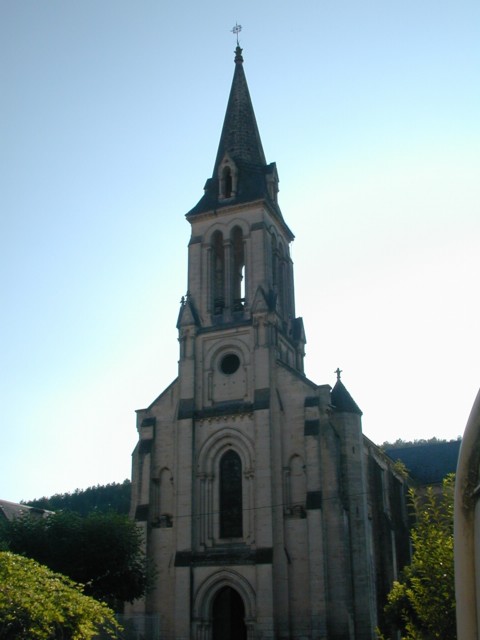
We had the afternoon free to explore Sarlat; I stayed in the hotel to get the webpages through yesterday caught up, and to repack my suitcases for our early departure tomorrow. Then we headed to nearby Le Bugue for a light dinner (not as light as most people were expecting, though!), and as the sun was going down we went to the church of St. Sulpice to set up and rehearse for our first formal concert of the tour.
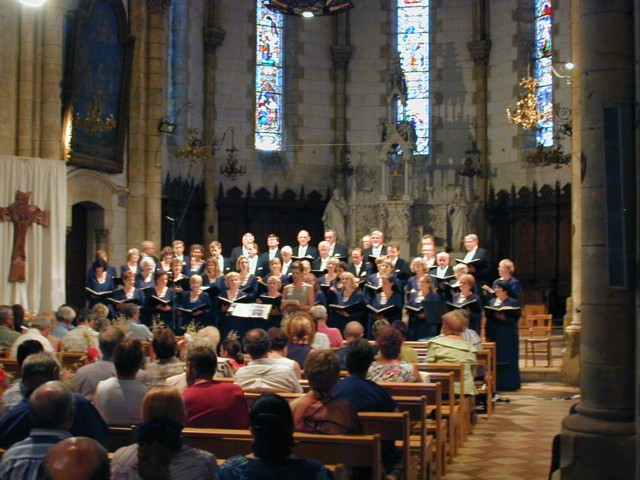
The concert was an hour long, and was well attended, with most of the church full. It was also pretty darn hot, especially with our black formal suits and dresses! We performed many of the sacred songs we have used for our previous informal concerts, and after a brief intermission (during which the men were allowed to jettison their coats for the second half!) we came back to sing our secular pieces (medley from "Phantom of the Opera," jazz pieces, and our one song in French, "Dirait-on") for the first time in the tour. The audience appeared to enjoy the concert enthusiastically. (Thanks again to Steve Campbell for this shot.)
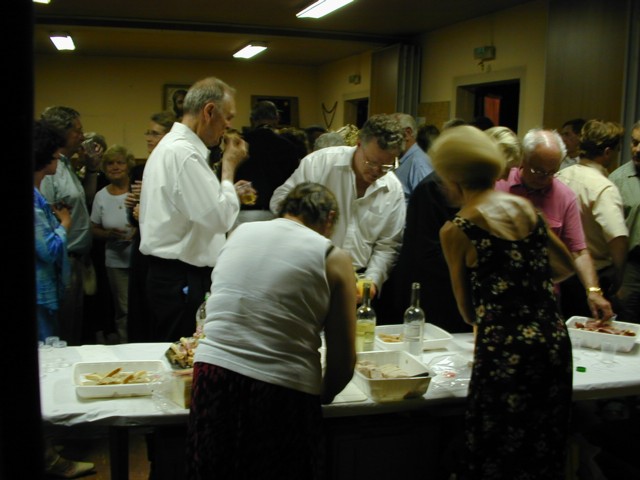
Afterward the people of the town welcomed us to a reception in a church-school hall. The two ladies in the foreground had made for us canapés with ham and paté, as well as strawberry tarts and chocolate eclairs; delicious! The lady and gentleman at the extreme left of the photo are the Deputy Mayor for Tourism and the Mayor; at the concert, Guy Hatlie presented him with a key to the city of Manhattan Beach! We were made to feel very welcome (and full!), and we felt that we had really found an appreciative audience, which as performers is something we appreciate quite a lot. We then got on some local buses around midnight (our own drivers had to turn in earlier to rest up for the long drive the next day) to return to the hotel; and once again, I just did email and turned in, so I'm sorry to be posting this webpage a day late again.
 To
Monday, 4 July 2005
To
Monday, 4 July 2005 Back
to choir tour itinerary
Back
to choir tour itinerary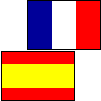 Back
to choir tour home page
Back
to choir tour home pagenew 4 July 2005